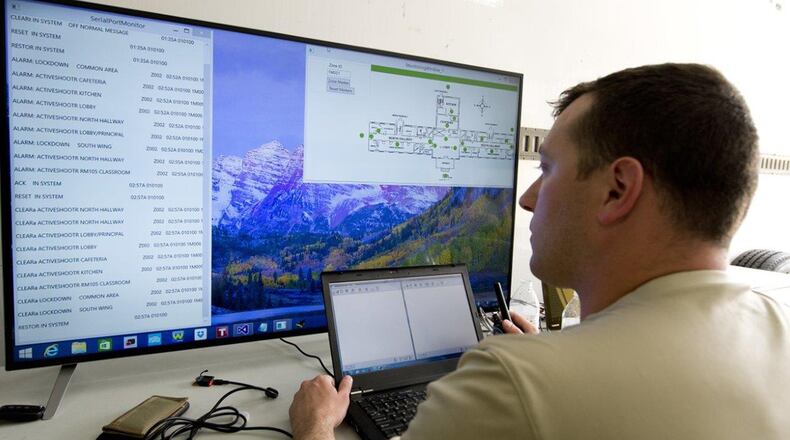The ASPS was developed with simplicity in mind and is described as a fire alarm for active shooters. It detects the sound of a gunshot using advanced digital signal processing and artificial intelligence to differentiate from other loud noises. When a gunshot is detected, the system sounds an alarm and transmits the exact location of the emergency to police and fire dispatch.
“As soon as our team began analyzing this problem, it was apparent that we can very easily improve our response to active shooter situations, saving the lives of both victims and first responders in the process,” explained Perrine.
Additionally, the ASPS integrates into existing fire alarm systems and associated wiring, eliminating the need for stand-alone networks, servers or software. This greatly reduces cost, putting gunshot-detection systems within the realm of widespread affordability for the first time ever.
“The fact that we can provide a solution so affordably makes this opportunity even more urgent,” said Perrine. “I left my career as an Air Force officer to make sure this technology is available to protect our service members as well as the public at large.”
The PLA between the Air Force and Protective Innovations is exclusive, meaning no other company can receive a license to develop and market the technology to the same industries. The agreement was developed with the assistance of TechLink, a Department of Defense partnership intermediary.
Partnership intermediaries facilitates joint projects and accelerate technology transfer between Department of Defense laboratories and their partners.
“Working with TechLink to secure the PLA was incredibly easy and painless, although there is always some waiting involved in this kind of activity,” explained Perrine. “The biggest challenge was just figuring out the right person to call to get the process started.”
Protective Innovations is still looking for investors and has seen significant interest from the education and military markets. With at least one major university interested in fielding the system, the company expects to make initial deliveries next year.
“There’s no reason why every school, airport and military base in the United States cannot be protected from gunshots the way they currently are from fires within the next five years,” said Perrine.
The system was developed jointly by Perrine, Capt. Carlos Horner, and 1st Lts. Dan Gunderson, Evan Glowiak, Andrew Hyde and Bruce Von Niederhausern from Robins Air Force Base. Every member of the team has maintained an interest in the technology. Perrine hopes that in the future some of them may join the company full-time.
The Commander’s Challenge is an annual Air Force-wide competition focused on finding solutions for real-world threats the military faces each year. Participants work in teams to develop a problem solution and deliver a presentation at the end of each challenge. This process stimulates innovation and allows AFRL a chance to see more than one potential solution, ultimately choosing the best or even a combination of the solutions presented.
For more information about technology transfer opportunities with the Air Force, call the Air Force Technology Transfer Program Office at 937-904-9830.
About the Author
